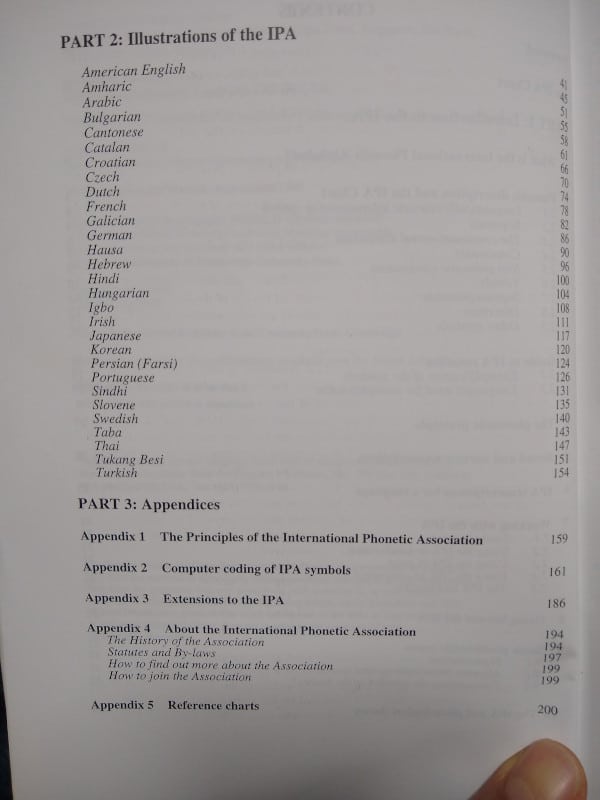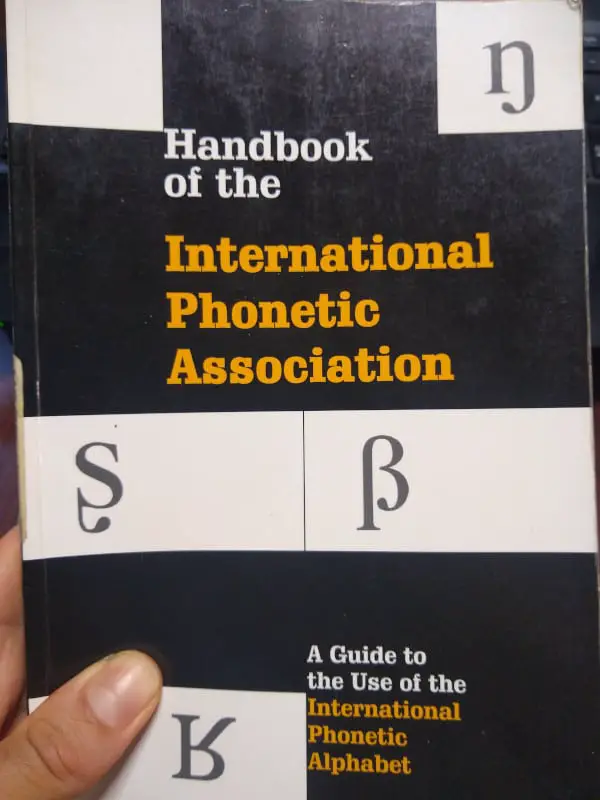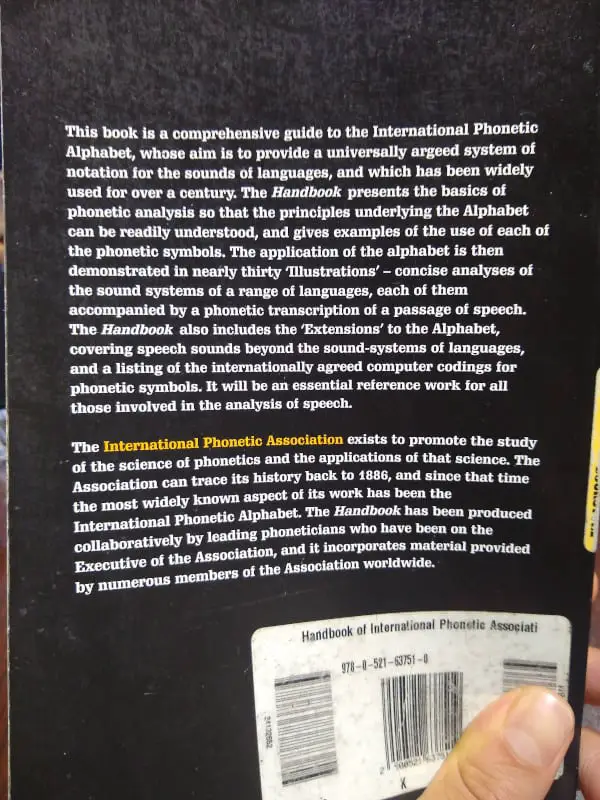The Handbook of the IPA is a great resource book for the study of the International Phonetic Alphabet. Readers get a comprehensive explanation of how it works and complete profiles for 29 different languages. A must have for anyone looking to learn IPA.
Complete guide
The entire first part of the book deals with the framework of the International Phonetic Alphabet (IPA). It seeks to explain the entire IPA system and its proper use. This gives the reader a very in-depth understanding of the alphabet.

The discussion offered in part 1 is a bit thick. It is a heavy read and I wouldn’t recommend reading the handbook from cover to cover. This is definitely a book you use as a resource to supplement your study of IPA. It includes a description of all aspects of the system, so you can use it in the same way you use a dictionary.
You don’t read a dictionary from the first page to the last; you use it to look up specific words you need. It’s the same sort of idea here. There are many words that you will only see when talking about phonetics, ‘jargon’, that the handbook defines in a lot of detail.
I’ll be honest with you, all of this information can be found online for free, but the collection of it all into a single book is where the value is. You don’t need to dig through web pages and sift through search page results to find the information you need. It’s all here in the handbook written in a logical structure.
29 Language Profiles
Part 2 is where the book goes from being a nice introduction to the IPA to a useful reference manual that can provide a nice framework for IPA study.

The book offers complete profiles for many of the words major languages, although regrettably Spanish is missing (as one of the most spoken languages in the world it would have been nice to see Spanish included).
The profile consists of a chart showing all the consonant sounds (p, t, k, etc.) in the language along with example words for each sound. This is a nice feature to have condensed and ready for quick review in a single book. If you use the minimal pair strategy to practice pronunciation, this can give you a starting off point for each sound.
Of course, there is a similar chart for the vowel sounds (a, e, i, o, u, etc.) in each language as well. The discussion about vowels isn’t very clear for non-linguists (it will be confusing for people without a linguistics background), but the charts and example words provided for each sound are invaluable for a study of speech sounds.
Each profile also includes a discussion about certain aspects of each language such as stress and accent. This can be a bit hard to understand, but if you spend the time on it you can learn valuable information about the language and how it may be different than your native one (some languages stress words differently or put different tones on words that affect the way they sound).
Where the profiles shine however is the inclusion of a short story, “The North Wind and the Sun”, that provides an example of each IPA system in action. The handbook provides a version of the story written in the script of each profile language (they even provide romanizations [written in Latin letters] for languages not written in a Latin script, such as Japanese). This story, especially the version written in English, provides a complete inventory of the sounds in the language in context. You can read, understand, and practice the sounds and their interactions with each other in a real text.
The story is also transcribed completely into IPA. This will aid you in your study of the symbols you need to know. A version written in plain English along with a transcribed version shows you exactly how to pronounce them.
How should I use it?
This isn’t a book that you read cover to cover. The primary use for the handbook is as a reference manual for IPA study. You can quickly look up information about the IPA symbols and how they are properly used. The handbook is a perfect “IPA Dictionary”. If you come across a word or phrase you don’t understand, you can find it discussed in the handbook along with examples showing the symbol of phenomenon in use.
The English IPA profile available in the book is particularly well done. You can find both two types of IPA transcription (narrow and broad) along with the story I mentioned above. This makes the book especially well suited for English language learners.
If you learn the IPA, you can directly translate that knowledge into becoming a better English speaker. Any well made vocabulary resource is going to include IPA transcriptions (such as a dictionary or vocabulary lists). The reason is The IPA is the single greatest tool for pronunciation training and accent reduction.
After learning the IPA, you will finally be able to read and understand the IPA transcriptions you read in dictionaries and on websites like Forvo or wiktionary.
Pair your study of English IPA with your native language
By far the best strategy for learning the IPA is to pair your study of English with your native language. This allows you to deeply understand the symbols and how they are used before moving on to a study of English sounds. You already are an expert on the sounds of your own language, so why not put that knowledge to good use?
Once you understand how the IPA is used to represent the sounds in your native language, moving over to English will be a piece of cake.
A system for the world’s sounds
The value of learning the IPA doesn’t stop at English. You can take your knowledge with you into your study for any language on Earth. Not many things you learn can be applicable in so many places! Don’t forget that the IPA system is intended to be a description of all speech sounds found in language. This makes it useful for every learner of all languages.
If you are a polyglot (or aspiring polyglot) who hasn’t learned the IPA yet, hopefully, you can see the utility in such an elegant system.
Verdict
The Handbook of the IPA is a useful resource for anyone learning the International Phonetic Alphabet. While the writing can be very technical and hard to get through at time, the purpose of the book isn’t to be read like a novel. As a resource volume, the handbook is phenomenal. It provides you with an in-depth look at the system and complete profiles of many languages which makes it trivial to compare and contrast some of the world’s most spoken languages with each other.
For the purposes of English learners, the quality of the English sound profile compiled by Peter Ladefoged is unrivaled. Everything you need to learn and understand the sound system of English is contained here. Coupled with the extensive description of the International Phonetic Alphabet in part 1 of the book, you will have yourself a reference book that is unmatched in its depth and quality.
If you haven’t already, check the Handbook of the International Phonetic Association out on Amazon!
Happy Studying!





